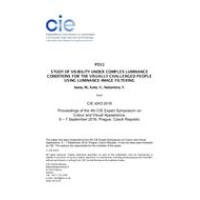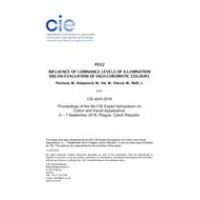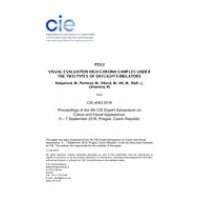A VISUAL EVALUATION OF COLOUR DIFFERENCES BETWEEN 3D OBJECTS (PP18, 362-368)
- Secure PDF Files
- Conference Proceeding by Commission Internationale de L'Ecl
- Category: CIE
$21.20
$11.00
The aim of this study is to see if colour differences of colour 3D objects are different from 2D objects. Five colours were tested, each consisting of 2 three-dimensional geometric shapes, 2 materials and perturbed in 3 colour attributes. This resulted in 52 three-dimensional colourshape combinations, using a series of psycho-visual experiments to quantify visual colour differences of 3D objects. Each colour-shape combination was assessed using 7-step grey scale under a standard light booth by a panel of observers with normal colour vision. Measurement data were compared with the psychophysical experimental data. The results show that the perceptual colour differences in both cube and cone shapes are similar. In terms of material, matte surface is better than glossy surface in discriminating colour differences, especially in hue differences. Chroma differences for high chroma or dark colours are not easy to aware. Lighting and colour also have some interesting impacts on the results.
 PDF
PDF
All of our standards document are available in PDF (Portable Document Format), an electronic, downloadable format.You will be able to download the file in your account downloads.
 Multi-User Access
Multi-User Access
After purchasing, you have the ability to assign each license to a specific user.
 Printable
Printable
At any time, you are permitted to make printed copies for your and your members' reference use.





